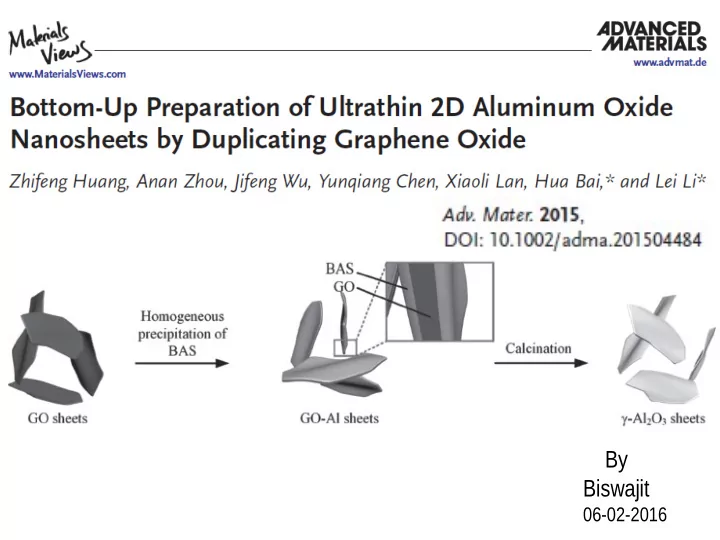

By Biswajit 06-02-2016
Introduction 2D nanosheets exhibit unique physical and chemical properties different from the bulk materials, due to the very large surface-to- volume ratio and the quantum-confinement effect. 2D nanosheets have demonstrated their broad applications in solar cells, energy-storing devices, photocatalytic system, and so on. There are two strategies for synthesizing 2D nanosheets: top- down and bottom-up methods. In the top-down strategy, nanosheets are exfoliated from the bulk crystal, either by chemical reactions or mechanical effect. Evidently, the crystal used as the raw material should have a 2D layered structure. The bottom-up strategy involves directly growing the nanosheets starting from atoms, ions, or molecules.
It is still challenging to fabricate 2D graphene-like nanosheets from materials that do not have a 2D layered structure. For this purpose, the bottom-up strategy is the best choice, but the difficulty in this strategy is how to find a compatible template and synthesis reaction to achieve the 2D growth of the materials.
In this paper In this paper, they have synthesized Al 2 O 3 nanosheets using bottom-up preparation method taking GO as a template and Al 2 (SO 4 ) 3 as a precursor. They have shown that 2D Al 2 O 3 nanosheets are more efficient to remove fluoride from water compared to Al 2 O 3 particles. Adsorption isotherm is matching with Langmuir isotherm.
Result and discussion
Conclusion They developed a bottom-up method to synthesize graphene-like 2D-Al 2 O 3 nanosheets. In this method, GO sheets were employed as the 2D template. The amorphous structure of the precursor is crucial for the formation of perfect 2D nanosheets. Slow rate of precipitation and slow and steady decomposition of GO-M composition is required to get defect free 2D nanosheets. The 2D-Al 2 O 3 nanosheets were used as the adsorbent for removing fluoride ions from water, and showed fast adsorption kinetics and large adsorption capacity.
Future direction Using this procedure it is possible to synthesis inorganic 2D nanomaterials from the precursor which do not have sheet structure and this materials can be used as catalyst and in environmental science (like purification) due to their large surface to volume ratio. MoS 2 can also be used as a template. Thank you
Recommend
More recommend